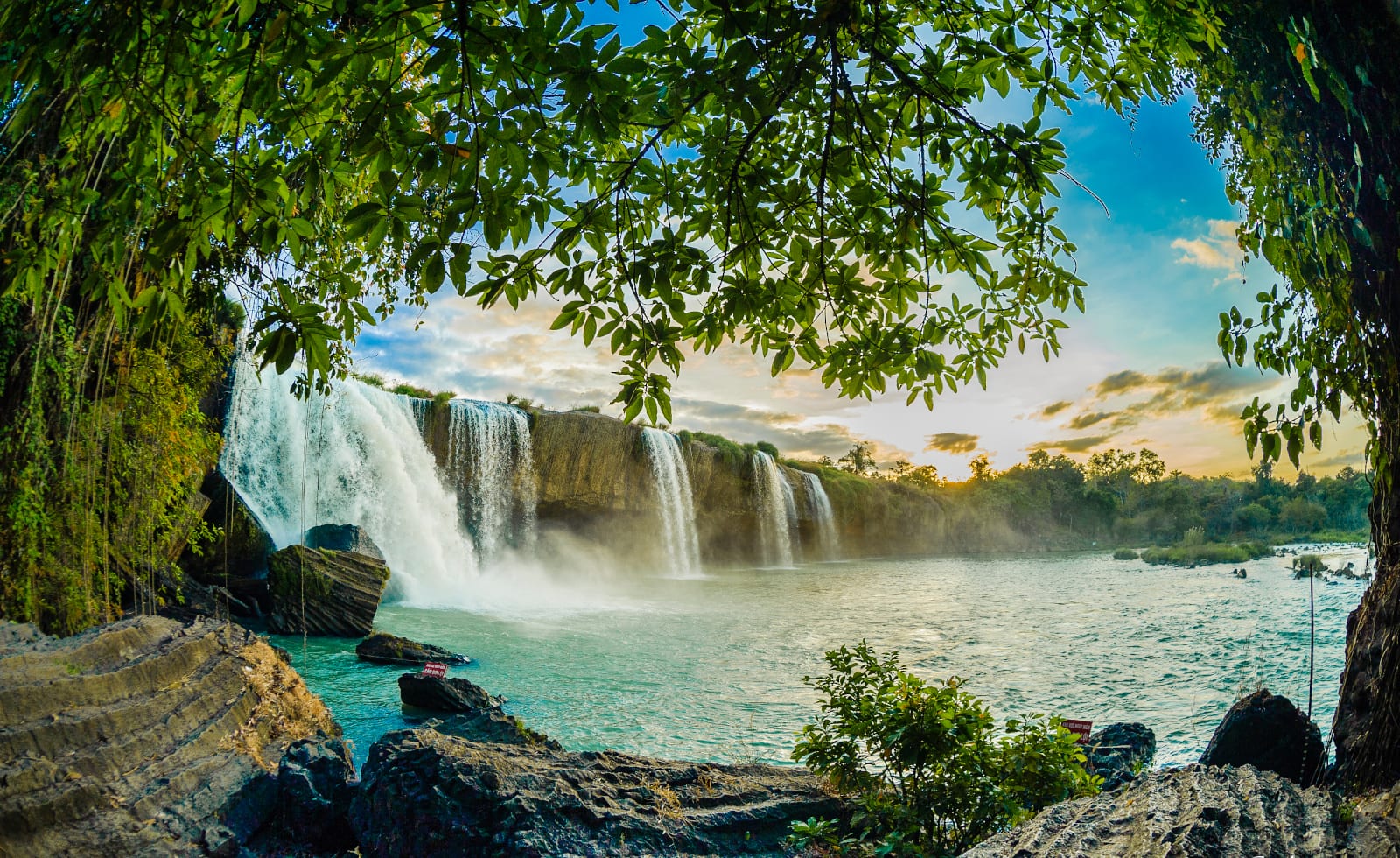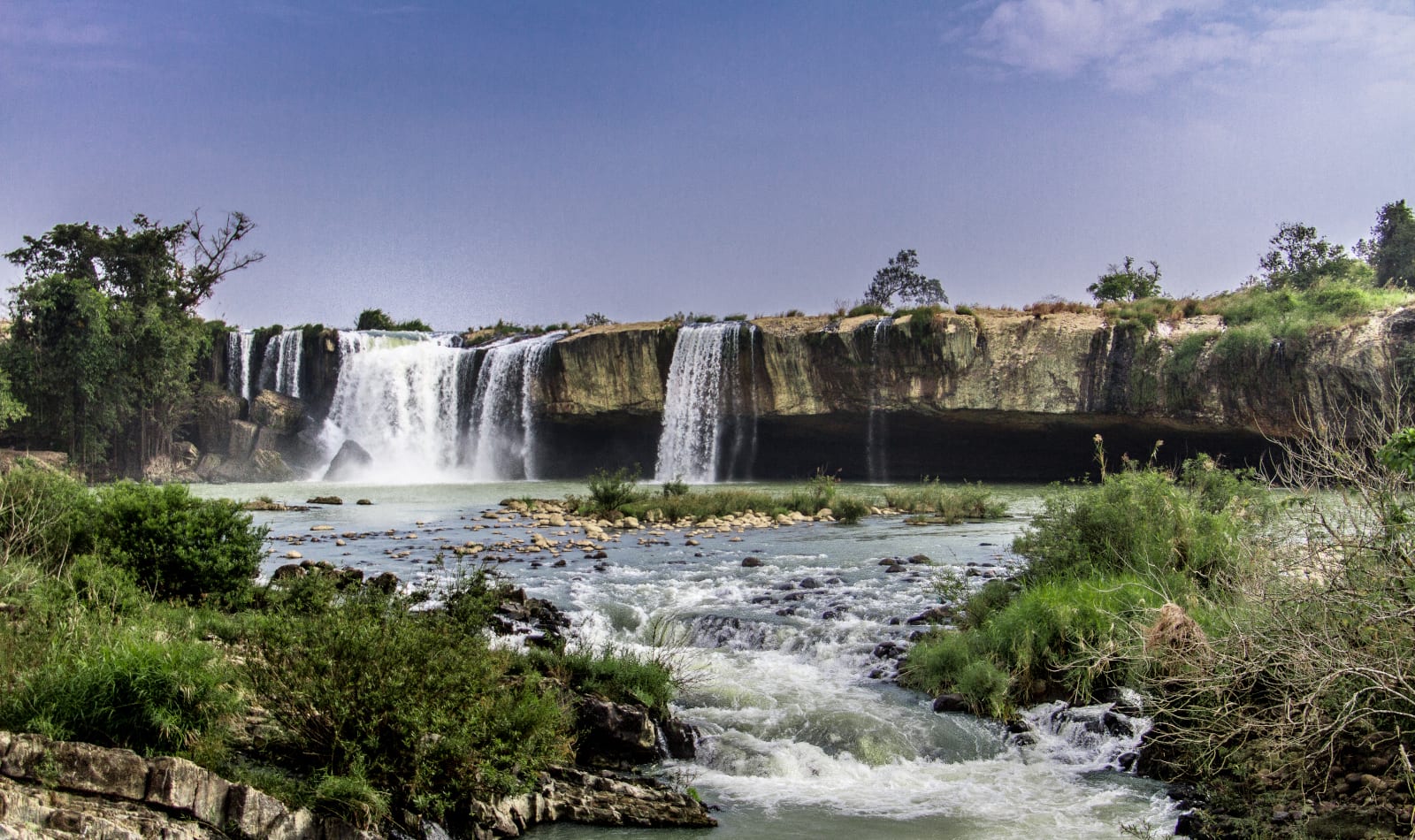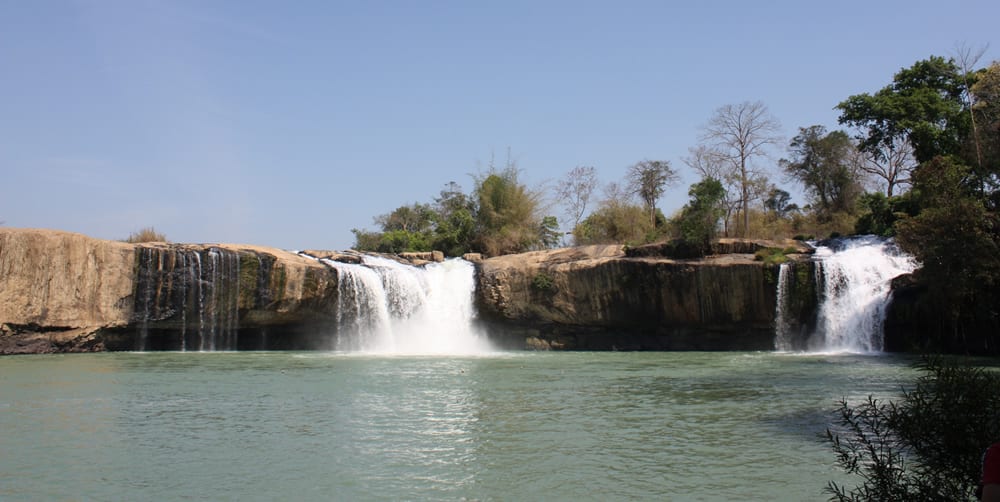The rugged terrain of Southern Vietnam’s Central Highlands guarantees two things: breathtaking natural beauty and falling water. Regarding the latter, there are three waterfalls in the Central Highlands called Dray Nur, Dray Sap, and Gia Long, which make for an exceptional day of exploration
These waterfalls draw visitors into an authentic natural experience and a chance for some sharable photos.
Where Are the Central Highlands?

Despite containing the word “central” in its name, Vietnam’s Central Highlands are actually located in the southern portion of the country. If the shape of Vietnam’s borders could be described as the letter “S”, the Central Highlands would make up the lower segment just before the final curve.
The region includes the provinces of Dak Lak, Dak Nong, Gia Lai, Kon Tum, and Lam Dong, all of which are situated more or less along the borders with neighboring Laos and Cambodia. A beach destination it isn’t, but as we’ll see it’s still a region worth exploring.
1. Dray Nur Waterfall

Of the three waterfalls, Dray Nur can legitimately be considered the most impressive. Instead of one large, gushing spout, Dray Nur Waterfalls is rather a wall of cascading water dropping from an elevated ridge along the Srepok River.
While there is a parking area with the inevitable souvenir shops on-site, overall, Dray Nur is a natural setting, with some great views from the rocks on the left bank of the falls. Furthermore, a suspension bridge accessible by following the path at the water’s edge also provides you with a great location to view the flowing water. Note that despite the pool’s inviting nature, no swimming is allowed.
The largest town of note in the area is Buon Ma Thout, which is approximately a 3-hour drive from both Da Lat to the south and the beach resort town of Nha Trang to the southeast. In fact, you’re far closer to the eastern border of Cambodia than anywhere on Vietnam’s coast.
From Buon Ma Thout, head southwest on highway AH17 until the town of Ea T’Ling, where you turn south towards Dray Nur Waterfall.
Address: Đường đi thác Dray Nur, Dray Sáp, Krông Ana, Đắk Lắk Province
2. Dray Sap Waterfall

The Dray Sap Waterfall shares a similar feel to the Dray Nur Waterfall, even if the logistics are not the same.
After arriving at the parking area, visitors must traverse a series of stairs along a 600-meter trail down to the water’s edge. From here, you can look out at the multiple chutes of water spilling over a wide rocky ledge of modest height. As is the case with Dray Nur, no swimming is allowed in the pool below the falls.
Once again, the town of Buon Ma Thout is the prime launchpad for a trip out to Dray Sap Waterfall. Despite Dray Sap’s geographical proximity to Dray Nur, one must, unfortunately, retrace their route back to the main highway (AH17) to gain access to the road down to Dray Sap if traveling between the two.
Address: Thôn Đức Lập, Đắk Sôr, Krông Nô, Đăk Nông 64000
3. Gia Long Waterfall

Another gem of the Central Highlands, Gia Long Waterfall is a worthy attraction for visitors to the area. Situated further upstream along the Srepok River than Dray Nur and Dray Sap, the falls are spread across the breadth of the river. Characterized by large rock formations, the water levels can vary between a raging torrent and a dry trickle.
Either way, you can take in the view from a rustic suspension bridge that serves as a prime vantage point.
Gia Long Waterfall is located about 6 kilometers distant from Dray Sap and approximately 13 kilometers from the highway along a road built by the former king that serves as the falls’ namesake. Organized tours from Buon Ma Thout can also get you there if you’d rather not have the hassle of navigating on your own.
Address: Đi Cụm thác Dray Sáp, Dray Sáp, Krông Nô, Đăk Nông
Thanks for checking out three of the most popular tourist attractions in the Central Highlands. For those looking for more natural landmarks to explore in Southern Vietnam, consider these waterfalls near Da Lat.


 9 Best Beaches by Ho Chi Minh City
9 Best Beaches by Ho Chi Minh City